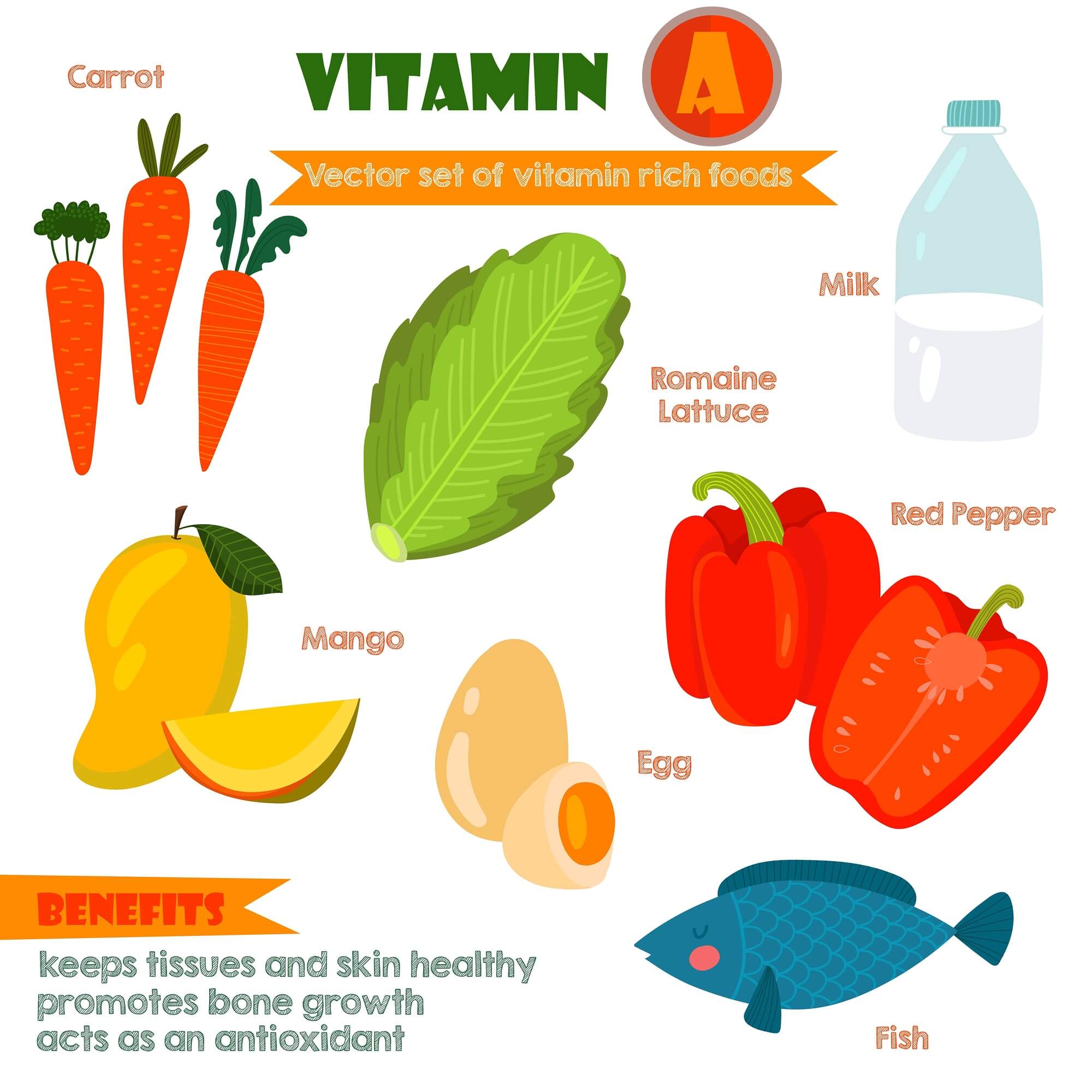Hello ladies and gents this is the Viking telling you that today we are talking about
VITAMIN A

What is vitamin A and what does it do?
Vitamin A is a fat-soluble vitamin that is naturally present in many foods. Vitamin A is important for normal vision, the immune system, and reproduction. Vitamin A also helps the heart, lungs, kidneys, and other organs work properly.
There are two different types of vitamin A. The first type, preformed vitamin A, is found in meat, poultry, fish, and dairy products. The second type, provitamin A, is found in fruits, vegetables, and other plant-based products. The most common type of provitamin A in foods and dietary supplements is beta-carotene.
How much vitamin A do I need?
The amount of vitamin A you need depends on your age and sex. Average daily recommended amounts are listed below in micrograms (mcg) of retinol activity equivalents (RAE).
Life Stage Recommended Amount
- Birth to 6 months 400 mcg RAE
- Infants 7–12 months 500 mcg RAE
- Children 1–3 years 300 mcg RAE
- Children 4–8 years 400 mcg RAE
- Children 9–13 years 600 mcg RAE
- Teen boys 14–18 years 900 mcg RAE
- Teen girls 14–18 years 700 mcg RAE
- Adult men 900 mcg RAE
- Adult women 700 mcg RAE
- Pregnant teens 750 mcg RAE
- Pregnant women 770 mcg RAE
- Breastfeeding teens 1,200 mcg RAE
- Breastfeeding women 1,300 mcg RAE
What foods provide vitamin A?
Vitamin A is found naturally in many foods and is added to some foods, such as milk and cereal. You can get recommended amounts of vitamin A by eating a variety of foods, including the following:
- Beef liver and other organ meats (but these foods are also high in cholesterol, so limit the amount you eat).
- Some types of fish, such as salmon.
- Green leafy vegetables and other green, orange, and yellow vegetables, such as broccoli, carrots, and squash.
- Fruits, including cantaloupe, apricots, and mangos.
- Dairy products, which are among the major sources of vitamin A for Americans.
- Fortified breakfast cereals.
What kinds of vitamin A dietary supplements are available?
Vitamin A is available in dietary supplements, usually in the form of retinyl acetate or retinyl palmitate (preformed vitamin A), beta-carotene (provitamin A), or a combination of preformed and provitamin A. Most multivitamin-mineral supplements contain vitamin A. Dietary supplements that contain only vitamin A are also available.
Am I getting enough vitamin A?
Most people in the United States get enough vitamin A from the foods they eat, and vitamin A deficiency is rare. However, certain groups of people are more likely than others to have trouble getting enough vitamin A:
- Premature infants, who often have low levels of vitamin A in their first year.
- Infants, young children, pregnant women, and breastfeeding women in developing countries.
- People with cystic fibrosis.
Comments
Post a Comment